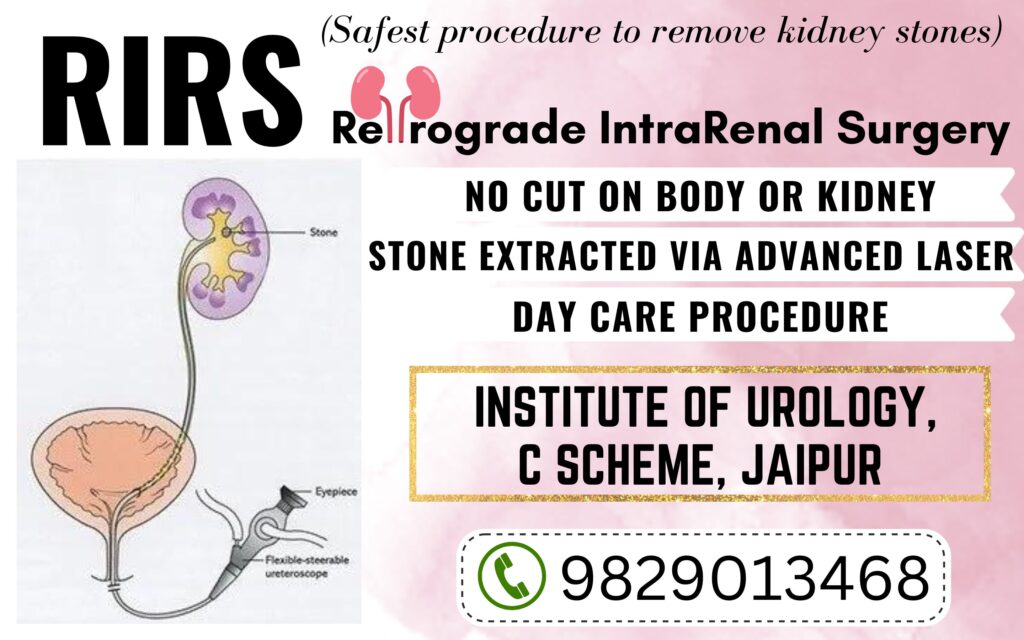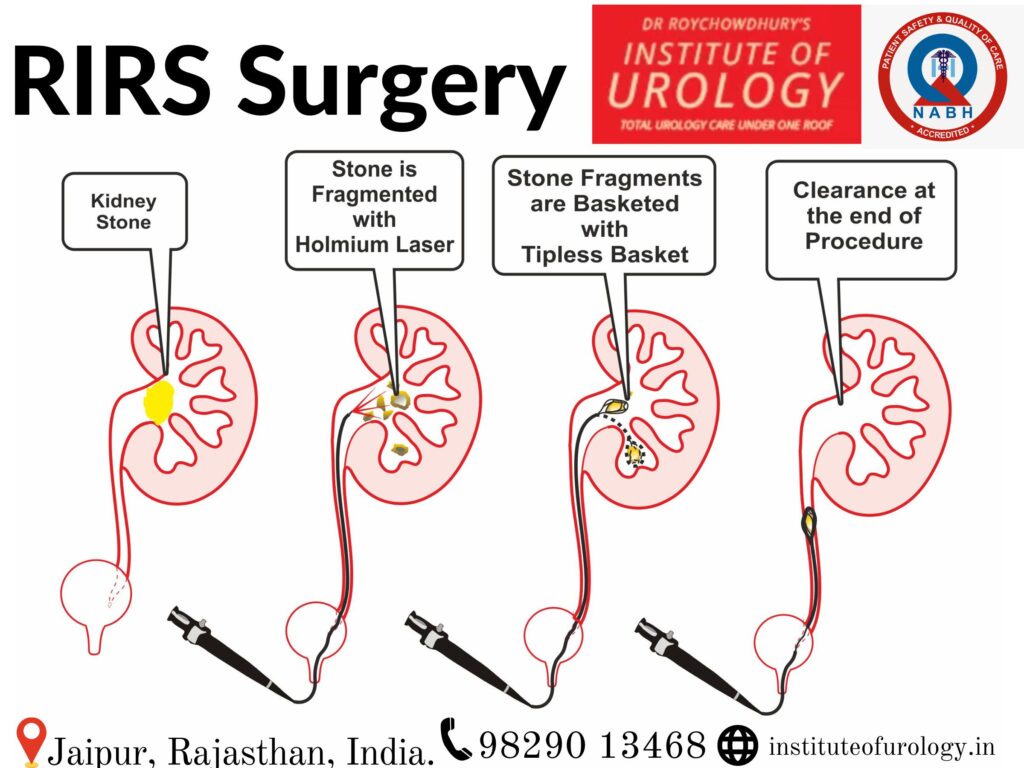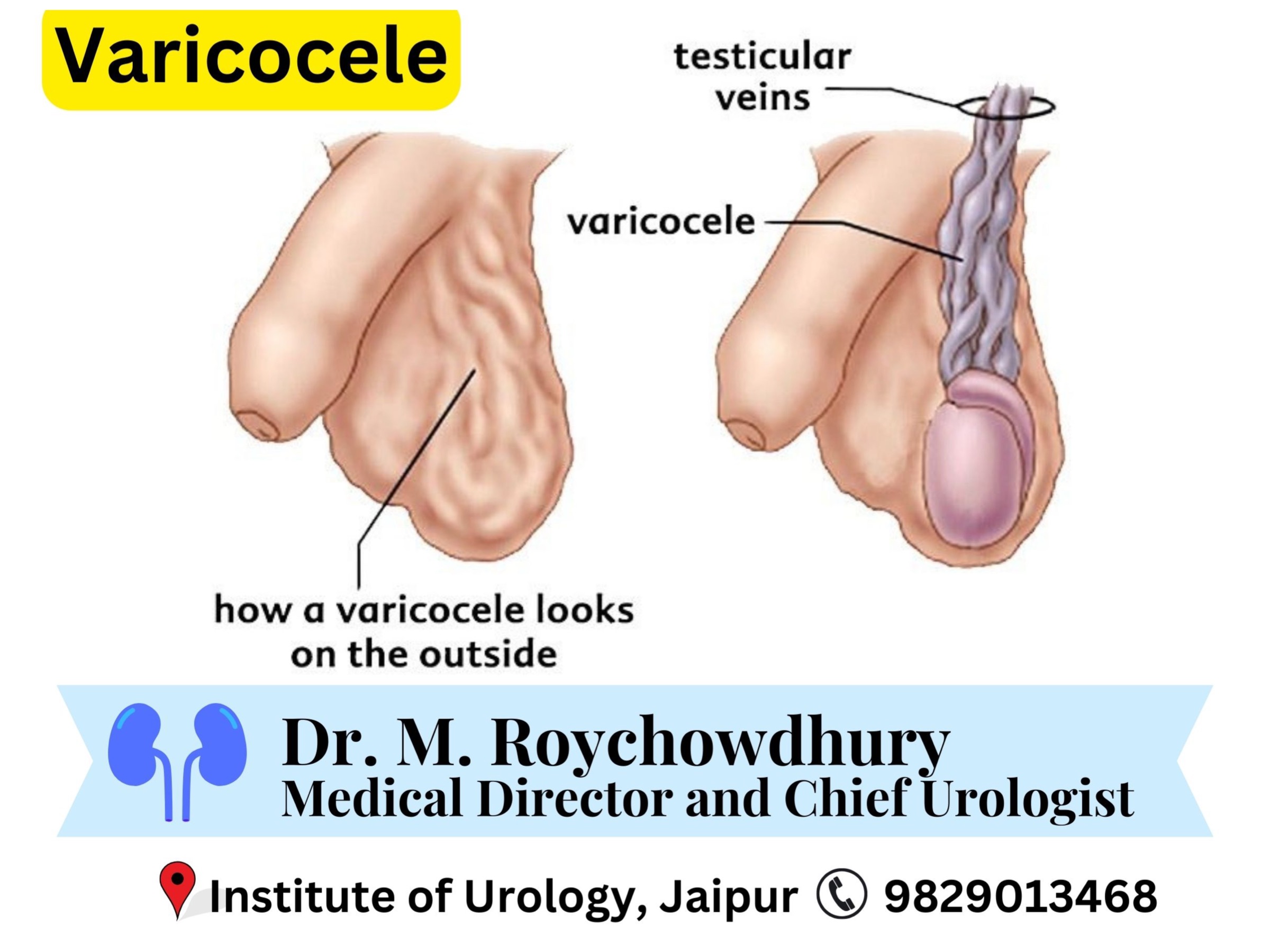RIRS Surgery – Kidney Stone Laser Surgery at Institute of Urology, Jaipur: Hello friends, Kidney stone is a problem that affects around 12% of population, at least once in their lifetime. Of these 12%, 50% are usually affected severely. In the later cases, sometimes oral medications do not suffice to cure the Kidney stones completely. Over the years, doctors and scientists through intense research have tried to develop techniques that can help patients get rid of the problem without much discomfort.

We now have specialised instruments and techniques which enable us to remove renal stones without absolutely any incision on the body. RIRS is one of those modern day procedures. Let us talk more about it below.
What is RIRS Surgery (or) Procedure?
In very simple terms, in RIRS, we remove kidney stones with the help of a camera and laser. There are no incisions given on the body, not even inside the kidney. Let us try to understand it better:
RIRS stands for Retrograde Intra Renal Surgery. As the name suggests, we approach the kidney from the opposite side of the urine flow hence the term “retrograde”. A fiberoptic tube with a tiny camera is inserted from the urethra, which goes up passing through urinary bladder, ureter and reaches the kidney. This tube is very flexible, so it easily passes through the passage.
A very thin laser fibre is then passed through this tube. It reaches the stone, and the laser is then activated. Now the laser breaks the stone into extremely fine pieces. So small that they can easily pass through the urinary passage. Then, saline irrigation is given which facilitates flushing out of the broken stone pieces. A super tiny tip-less basket may also be used to remove some fragmented pieces.
Can Large Stones be removed by RIRS Surgery?
RIRS is recommended for renal stones of size less than 2 cm.
What is a D-J Stent and why do I need it with RIRS Surgery?
A DJ stent (Full form – Double “J” (shaped) stent; because its curved at both extremes) in very simple terms, is like a thin pipe that is passed through the ureter. Upper end of the pipe is at the kidney and the other lower end is at the urinary bladder. The curved end makes sure the stent stays in place and does not slip away.
DJ stent is placed right after RIRS procedure is performed, on the same table. It is important because this helps in relieving the pain and also helps is healing of the renal system after the surgery. Usually, the patient is called for a “DJ stent removal”, 2-3 weeks after the original RIRS procedure was performed. By this time, the renal system has healed and the patient does not need to come back to the hospital after DJ stent removal in almost all the cases.
How do I prepare myself for RIRS Surgery
One thing to understand is, RIRS is one of the safest procedures. So you do not need to worry. Worrying less and having faith in your urologist is half the battle won. The urologist would order some preliminary tests before the procedure like
- Ultrasonography
- complete blood tests
- X – Ray KUB (Kidney, Ureter, Bladder)
- pre-op fitness from the anaesthesia team
- and some other tests depending on your pre-existing medical condition.
You will need to be on empty stomach for at least 6-8 hours before surgery.
Is RIRS done Under Local or General Anaesthesia?
RIRS is usually done under General Anaesthesia. Moreover, type of anaesthesia is decided keeping in mind patients medical records and pre existing medical conditions as well as patient preference.
How long does the whole procedure of RIRS Take?
Usually, the whole process of RIRS including DJ Stenting takes around 45 minutes. However this is not a specific limit and the time taken for the procedure can vary depending on the size of the stones, if the patient is a complicated case or if its a re-do procedure.
When Can I get discharged and go home after RIRS?
Under normal circumstances, a patient can go home as early as 24 hours after the surgery (with DJ Stent in situ). Patients are called again for DJ Stent removal 2-3 weeks after that.
What to expect after RIRS Surgery?
Most patients resume their daily activities within 2-3 days after the surgery. The urologist will advise you to drink plenty of water to help flushing out of any remaining bits of the original stone. Alpha blocker medicines may be advised because it helps pass out the pieces of stones.

What are the PROs and CONs of RIRS Surgery
PROs of RIRS Surgery:
1. Minimally Invasive procedure.
2. Operating time is short.
3. Absolutely no cuts or incisions on the body or kidney.
4. Less pain as compared to non laser techniques.
5. Minimal bleeding.
6. Short hospital stay time, recovery is fast.
7. Absolutely no harm caused to the normal renal tissue.
8. Safe and effective procedure even for patients who have previously undergone procedures like open surgery, percutaneous nephrolithotomy, and retrograde intrarenal surgery (RIRS).
CONs of RIRS Surgery
1. Cannot be used for stones bigger than 2 cm.
What are the Complications of RIRS Surgery
Fever, Flank pain, Transient Haematuria, Urinary Tract Infection are some of the complications but these are easily avoidable in the hands of expert urologists and better equipments. Some very rare complications include acute urinary retention, fornix rupture, ureter avulsion and sepsis.
For More Information, Queries or Appointment, Please give us a call on (0091) 9829013468







